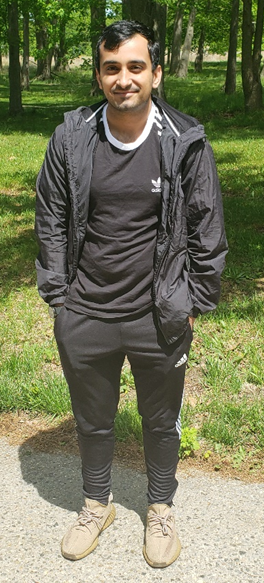Sheryar Choudhry, Verrazzano Class of 2022, completed majors in Mathematics and Physics
My capstone project is on clustering algorithms and their applications on surface drifters in the ocean. The data used in my research was collected in 2016 by CARTHE in their LASER experiment in the Gulf of Mexico. The goal was to release hundreds of surface drifters and track their positions over time.
In my research, we consider 185 of these drifters over the time span of 10 days. Out of the 185 drifters considered, which are on average 6km away from each other, 106 of these drifters end up in a clump that averages 70m across. A natural approach to studying this event is to cluster the drifters over the time period and study the clusters as they evolve into that clump.
When I started my project, I was already in the middle of doing this as my research, so turning it into my capstone project was a no-brainer. I had spent a lot of time with the data and I had plenty to talk about — but this soon became a problem. I wasn’t sure what to focus on and present. It seemed like all of it was important. It didn’t help that I wasn’t able to use any of the nice animations I had spent so much time on. Also, it didn’t help that I had 4 slides and a handful of minutes to explain what I did. It all seemed overwhelming. In the end, I decided to remove the portion of my research where I use the clustering algorithms to perform some analysis of the data. Therefore, adding that back would be a natural extension to my capstone project. Also, if I had more time, I would have also explored other clustering algorithms, such as k-means, and how they differ from my approach.
The hardest part of the whole capstone project was trying to present all the information in a way that someone with no prior knowledge could understand. Unlike a paper, I can’t assume people have some knowledge of the subject or use citations to avoid explaining everything. Throughout the process, I ended up changing the order of my slides many times as I realized the best way to present the research. However, I didn’t waste all of my precious slide space on definitions. Since there would be time for questions, I had some room to make assumptions.
Overall, it was a fun experience for me and I learned a lot from my mistakes. Perhaps in another timeline, we would have done the conference in person and I could have had my laptop on loop playing my fancy animations while I use all the time I’d like to explain my work. However, the constraints that were put in place make sense with all the people presenting and it does trim off any unnecessary fluff. Even with the freedom of the poster, I needed to choose my words carefully and be concise with my presentation.
I think this skill is invaluable. Especially today, where most people have become masters of talking, but not saying anything of substance. Hopefully, I am able to challenge myself and continue to grow on my journey to become a great scientist.


No comments:
Post a Comment